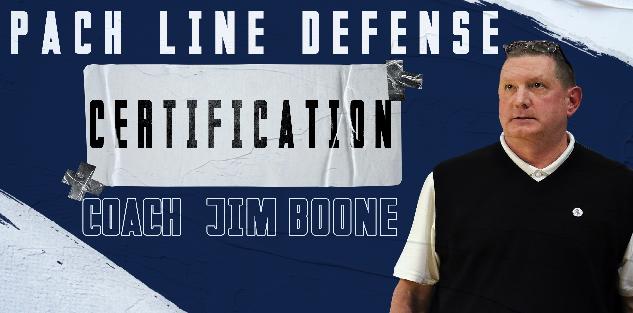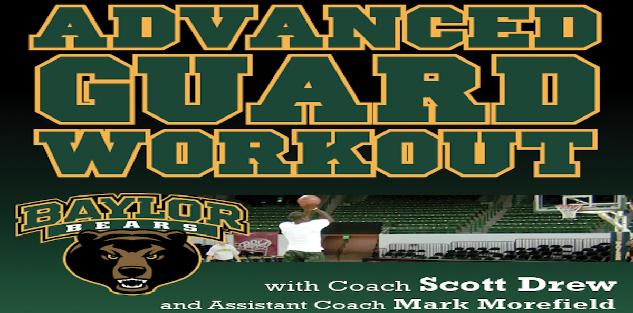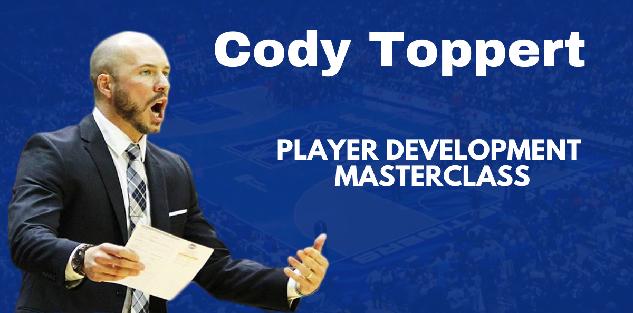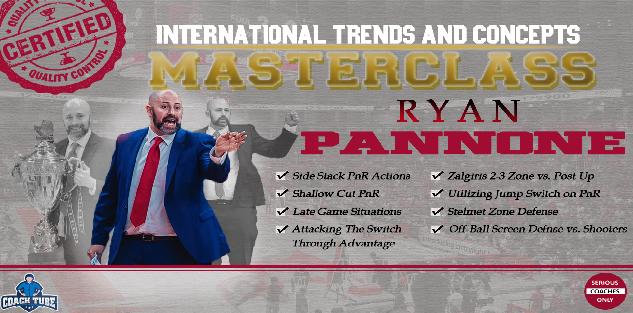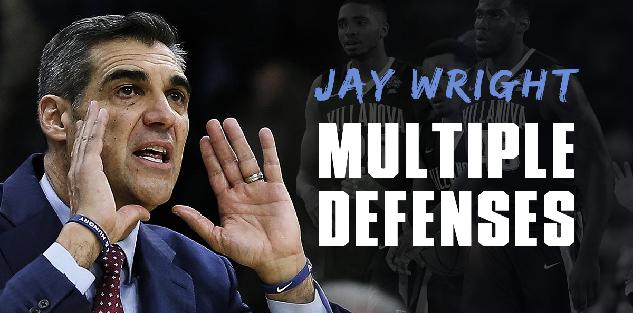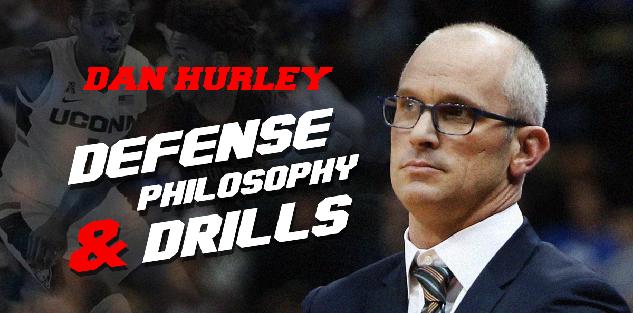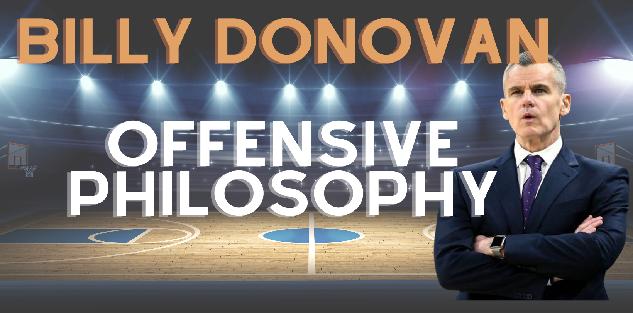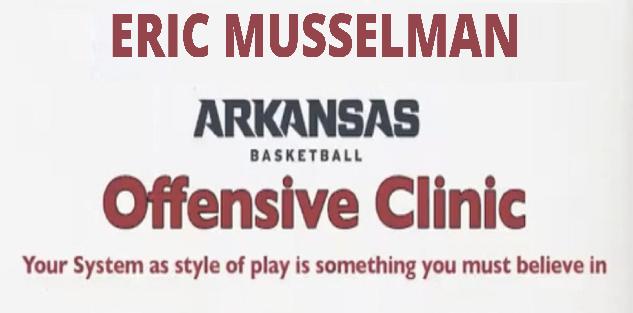Featured courses
- Two Great Game Situational Workouts For the Basketball Offseason by Grant Young
- Two Reads Basketball Players Must Understand Before Executing the Ball-Screen by Grant Young
- Two of LSU Coach Kim Mulkey’s Game-Winning Inbounds Plays by Grant Young
- Three Effective Early-Season Defensive Basketball Drills by Grant Young
- Four Essential Tips For Basketball’s 1-3-1 Zone Defense by Grant Young
- Four Zone Defense Drills to Strengthen Your Team by Grant Young
- How to Beat the Three Most Common Pick and Roll Coverages by Grant Young
- Two Drills to Improve Shooting at the Start of the Basketball Season by Grant Young
- Core Basketball Principles That Dallas Mavericks Coach Sean Sweeney Teaches by Grant Young
- Three Competitive Shooting Drills For Your Basketball Team by Grant Young
- How To Teach The ‘I’ Generation of Basketball Players by Grant Young
- Three Elite Drills to Begin a Basketball Practice With by Grant Young
- How to Build a Championship-Winning Basketball Team Culture by Grant Young
- Two of Texas Women’s Basketball Coach Vic Schaefer’s Tips For Team Culture by Grant Young
- Atlanta Dream WNBA Coach Brandi Poole’s Four Sets for Secondary Offense by Grant Young
- NC State Basketball Coach Brett Nelson’s 4 Crucial Point Guard Qualities by Grant Young
- Kentucky Coach Mark Pope’s Five Guard Rules For Offense by Grant Young
- McNeese State Basketball Coach Will Wade’s 4 Core Pillars by Grant Young
- 4 Tips To Instantly Improve Your Free Throw Shooting by Tyler Linderman
- Assemble a Championship-Caliber Basketball Rotation by Brandon Ogle
- Two of UConn Coach Dan Hurley’s Key Defensive Drills by Grant Young
- Four Post Moves All Basketball Forwards Should Have In Their Bag by Grant Young
- Four of Baylor Coach Nicki Collen’s Midseason Pick and Roll Adjustments by Grant Young
- WNBA Legend Sue Bird’s Two Tips For Attacking on Offense by Grant Young
- Houston Coach Kelvin Sampson’s Three Keys for Building a Basketball Program by Grant Young
- Two of Tom Izzo’s Top Michigan State Defensive Drills by Grant Young
- Four of Olympic Gold Medalist Coach Mechelle Freeman’s Relay Race Strategies by Grant Young
- Three Key Strategies Will Wade Uses to Build a Dominant Team by William Markey
- Five UConn Huskies Men’s Basketball Plays That You Can Use by Grant Young
- Three Tips for Maintaining Team Culture at the End of a Basketball Season by Grant Young
- Three Dribble Drive Motion Drills to Teach Your Basketball Team by Grant Young
- Three Dribbling Drills For Non-Primary Ball Handlers by Grant Young
- Four Advanced Ball Handling Drills For Basketball Guards by Grant Young
- Three Tips to Sharpen Your Post Player’s Footwork in Basketball by Grant Young
- These Three Pick and Roll Drills Are Crucial For Any Ball Screen Offense by Grant Young
- Three Closeout Drills to Improve Basketball Shooting Defense by Grant Young
- Three Tips to Perfect the Packline Defense in Basketball by Grant Young
- Four Keys to Executing the Read and React Offense in Basketball by Grant Young
- Three Tips to Develop Elite Basketball Shooters by Grant Young
- Three Crucial Keys to Executing the 5 Out Offense in Basketball by Grant Young
- These Three Offensive Sets Will Help You Beat Any Zone Defense by Grant Young
- Three Transition Basketball Drills To Play With More Pace by Grant Young
- Three 5 Out Offense Drills Any Basketball Coach Can Use by Grant Young
- Four Vital Techniques for a Motion Offense in Basketball by Grant Young
- Three Baseline Inbounds Plays To Win Your Basketball Team Games by Grant Young
- Four Drills For Sharpening the European Ball Screen Offense by Grant Young
- Three Positioning Tricks For a Basketball Zone Offense by Grant Young
- Three Rules to Perfecting Basketball's Lock Left Defensive System by Grant Young
- UCLA WBB Coach Cori Close’s Two Keys to Winning the Mental Game by Grant Young
- Four of Alabama Coach Nate Oats’ Favorite Basketball Drills by Grant Young
- Three Ways To Turn Transition Offense in Basketball Into Points by Grant Young
- Three Drills to Master Basketball's Pack Line Defense by Grant Young
- Three Transition Defense Drills to Halt Fast Breaks by Grant Young
- Four Offensive Rebounding Drills to Win Second Possessions by Grant Young
- 4 Defensive Technique Drills from Boston Celtics Assistant Coach Brandon Bailey by Marek Hulva
- 5 Drills to Improve Ball Handling by Tyler Linderman
- 13 FUNNY BASKETBALL GIFS by Alex
- BASKETBALL SPEED AND AGILITY: 8 QUESTIONS FOR COACHTUBE EXPERT RICH STONER by Jaycob Ammerman
- Defensive Strategies for Basketball by Ryan Brennan
- 4 Keys To Turning Your Program Into Championship Contender By Dallas Mavericks Coach Sean Sweeney by Marek Hulva
- 5 Components to Creating a Winning Basketball Program by Justin Tran
- Guide to Becoming a Lethal Scorer in Basketball by Justin Tran
- Zone Defense In the NBA Eastern Conference Finals by James Locke
- Mastering Court Mobility: Tips for Effective Movement in Basketball by Justin Tran
- 5 Basketball Shooting Drills: How to Develop a Sharpshooter by James Locke
- 6 Points of Emphasis for a Successful 5 Out Offense by Jaycob Ammerman
- Effective and Efficient Methods to Practice During the Basketball Season by Justin Tran
- Three Great Passing Drills From a Basketball Coaching Legend by Grant Young
- 7 Principles For Perfecting the Princeton Offense in Basketball by Grant Young
- How to Replicate A Modern NBA Offense by Grant Young
- Three Great Two-Ball Dribbling Drills For Basketball Development by Grant Young
- Two Rebounding Drills to Win Your Basketball Team Championships by Grant Young
- How to Improve Your Basketball Team’s Defense With the Shell Drill by Grant Young
- How Baylor Basketball’s Scott Drew Develops Elite Guard Play by Grant Young
- Off-Ball Movement Tips and Strategies: Lessons From the NBA Finals by James Locke
- Player Development: Scott Drew’s Tips for Producing NBA Guards by James Locke
- How to Execute a Spread Offense in Basketball by Grant Young
- Four Quality Quotes From Four Final Four Coaches by Grant Young
- A Guide to the Pack Line Defense by Alex Martinez
- 3 Defensive Build Up Drills to Improve Team Basketball Defense by Grant Young
- Battle of Two Great Coaches: Best Plays from the NBA Finals Contenders by Justin Tran
- 10 Creative Ways Athletic Programs Can Use a Video Board to Raise Money by Coach Williams
- How to Use 3 on 3 to Improve Your Basketball Team by Grant Young
- How to Defend the Pick and Roll by Grant Young
- Mastering Basketball Defense: Techniques, Drills, and Strategies for Success by Justin Tran
- Three Tips From The Coach Who Developed Giannis Antetokoumnpo by Grant Young
- 2023 NBA Draft: Skills and Technique from Top Prospects by Justin Tran
- From College to the Pros: Transitioning the Dribble Drive Offense by Justin Tran
- Positionless Basketball: Redefining Roles on the Court by Justin Tran
- Revolutionize Your Offense: Proven Concepts to Elevate Your Basketball Game by Justin Tran
- 5 Essential Fastbreak Drills Every Basketball Coach Should Know by James Locke
- How to Run a Circle Offense in Basketball by Grant Young
- Game-Changing Strategies: ATO Plays in the EuroLeague and Olympics by Justin Tran
- How to Stand Out at Basketball Tryouts by Grant Young
- How to Improve Your Basketball Team’s Transition Defense by Grant Young
- Indiana Fever GM Lin Dunn’s Two Keys For Women’s Basketball Coaches by Grant Young
- Strength Training Strategies Every Basketball Player Should Have by Grant Young
- A WNBA Basketball Coach’s Four Priorities In Transition Defense by Grant Young
- Three Adjustments to Make When Your Basketball Offense Isn’t Working by Grant Young
- Three Pillars to Applying Defensive Pressure on the Basketball Court by Grant Young
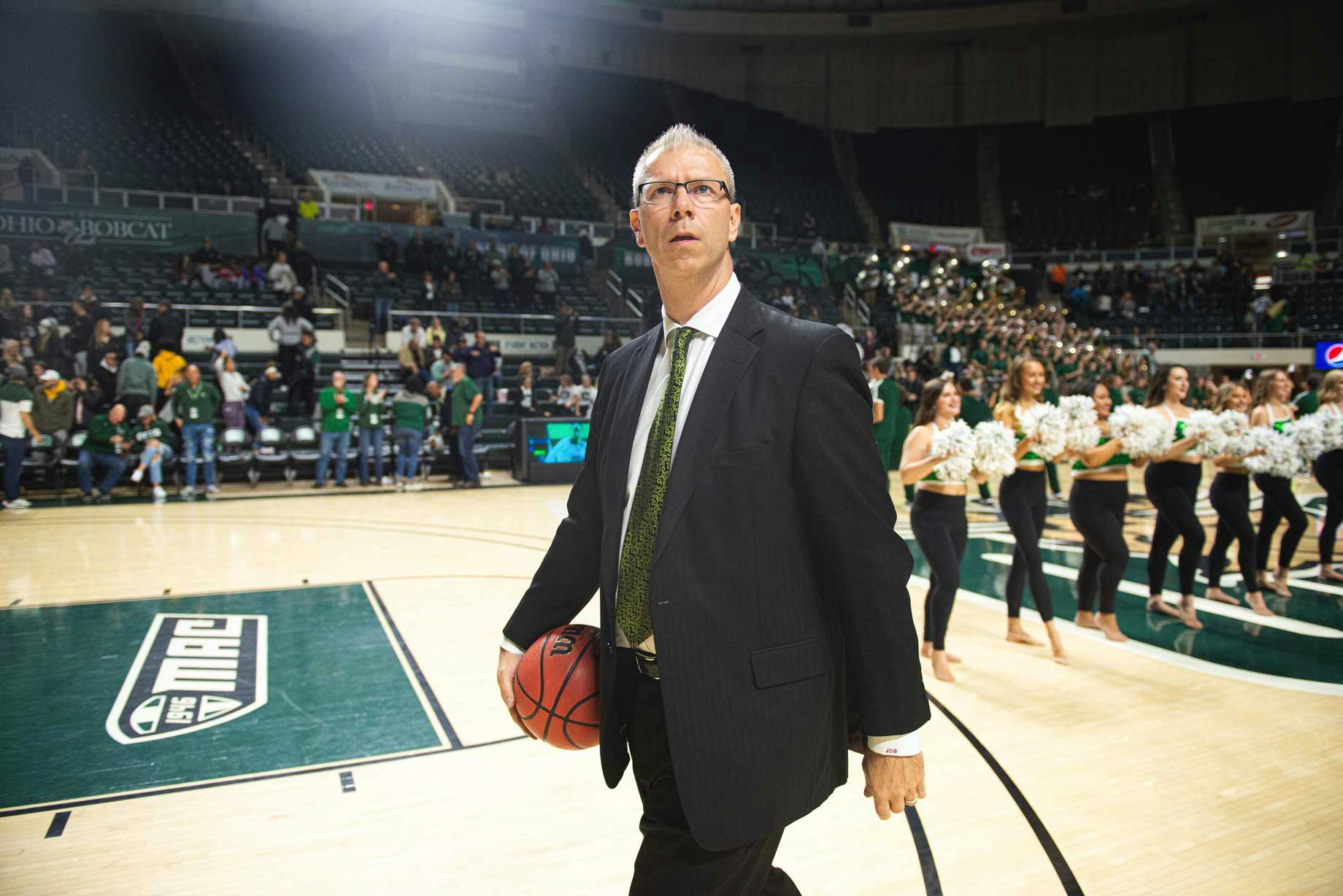
3 Defensive Build Up Drills to Improve Team Basketball Defense
- By Grant Young
University of Ohio head coach Jeff Boals is a whiz when it comes to basketball defensive drills.
During his seven seasons working as an assistant coach at Ohio State, Boals helped develop recruits like Evan Turner, Jared Sullinger, and Aaron Craft into National Players of the Year, first round NBA Draft picks, and all-time steals leaders in school history.
Since arriving at his alma mater of Ohio in 2019, Boals has turned the Bobcats program into a stalwart defensive force within the MAC conference.
Boals is deceptively simple when it comes to defensive strategy. He relies on a series of effective team defense drills that build unity on the defensive end rather than force Boals to rely on his players’ individual athleticism and talent. This allows Boals to sustain defensive excellence every season, regardless of what players he has rostered.
Luckily, Boals discussed these techniques at length through his ‘Drills To Improve Team Defense’ course. He gives a detailed breakdown on how to use these drills, along with how they benefit player development both individually and as a unit, which will turn your defense into a cohesive and intimidating entity.
Here are three of Boals’ drills to improve team defense:
1 vs 1 - Zig Zag Full Court into Post Defense Defense
The first defensive drill that Boals recommends is called 1 vs 1 Zig Zag Full Court into Post Defense.
The drill takes place on both sides of the court, with guards starting on one end and bigs on the other. The guards will bring the ball up their half of the court, and when they reach half court is when the drill begins involving the bigs.
Once the guard on offense crosses half court, they are looking to pass to their big, who is working on the post to get into a ball-receiving position.
When the big does receive the pass, the offensive guard then sprints to the other side of the court while the two bigs play 1 vs 1 in the post. After the post play ends, the defending big receives the rebound and makes an outlet pass to the next player waiting in line, and the drill starts again with the guard who was on offense acting as the defender.
Boals explains that the goal in this drill is for the defending guard is to make it as difficult as possible for the big to receive a pass. They’ll do this by trying to deflect the pass, eliminate any potential passing lanes, and keep active hands and moving feet at all times. The defending big is looking to ensure their offensive opponent receives the pass as far away from the hoop as possible, and plays good, tightly-contested defense without fouling.
2 vs 2 - Wing/Cornerg/Corner
Coach Boals’ second team defense drill is called 2 vs 2 Wing/Corner.
This drill can take place on both sides of half court (typically with guards) in each corner. There will be two players on offense, two on defense, and a coach available to inbound the ball.
After the inbound, the two offensive players will pass the ball back and forth while the two defenders work to take away the straight-line drive toward the basket, while also blocking clear passing lanes between the two offensive players. Once each pass is made, the defender on that player who receives the ball should be making a closeout, as if the offensive player is preparing to shoot.
Repetition is the goal of this drill. After about ten passes back and forth, the two defenders will be swapped out for two new players, and the drill will begin again.
With the three-way threat of pass, drive, or shoot, the two defenders will need to be constantly communicating in order to play effective defense and not allow for an open shot. This will also give coaches a chance to gauge which players communicate well with their teammates, potentially informing them about how to set their rotations.
3 vs 3 - Baseline Closeoutsloseouts
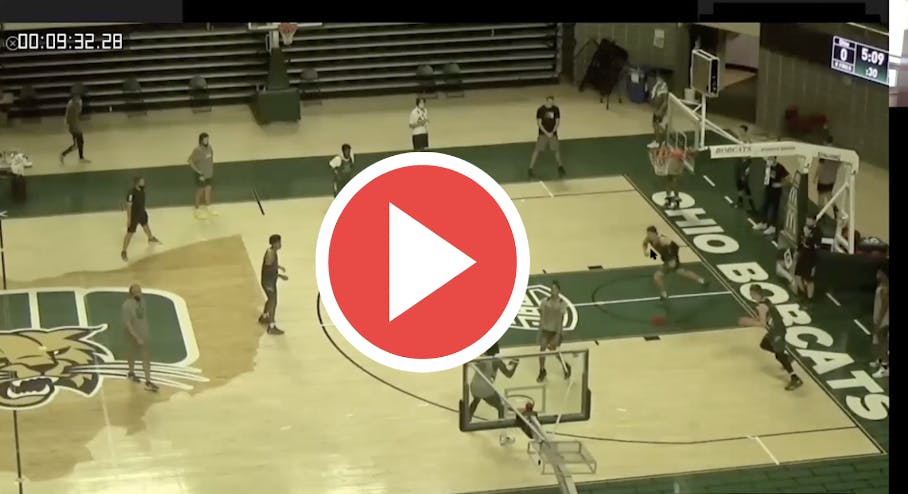
The third of Coach Boals’ build up drills to improve team defense is a 3 vs 3 baseline closeouts drill.
This drill starts with three offensive players out on the perimeter, with three defenders standing along the baseline. The three defenders will pass to each other in succession, and when they release the ball they’ll then sprint out to the offensive player they’re assigned to guard. Upon receiving the last pass, the final baseline defender then passes to the closest offensive player, and sprints to the other side of the court to be a help-side defender.
The goal for this drill is that each defender get out to their guy as quickly as possible with high hands, active feet, and their head on a swivel. Once the far-side offensive player receives the ball, they’ll make a shot-fake then the play goes live. From this point, the drill becomes a half-court 3 vs 3 game, with a focus on the three defenders executing closeouts, utilizing team defense, and blocking out their opponent when a shot goes up.
As soon as the defensive rebound is secured, the three players switch on offensive and defense, with the offensive players rushing to the baseline and starting the pass process once again.
Coaches also have the option to blow the whistle after the initial perimeter passes, in order to optimize closeouts instead of starting the drill’s live portion.
A crucial aspect to all of Boals’ drills is what he calls the ‘Bobcat Standard’. This is essentially a charting system that grades every play made in practice, assigning and deducting points based on outcomes.
Employing a charting system like this creates an objective way to measure his players’ performance, while also facilitating competition between his players. These metrics heighten the stakes of every practice, and replicate a game-like environment that gets his players used to playing under pressure.
If these three team defensive drills work for a mastermind like Boals, it will surely work for you and your team’s defense, too.

